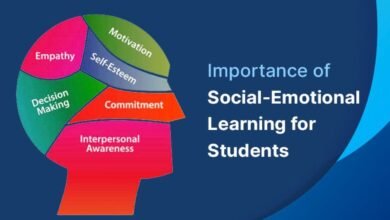The Importance of Creativity in Education

In today’s rapidly evolving world, the importance of creativity in education cannot be overstated. Creativity is not just a desirable trait but an essential component of a well-rounded education. It drives innovation, problem-solving, and personal growth, making it a cornerstone of effective learning. This article delves into the various facets of creativity in education, exploring why it matters, how it can be fostered, and the impact it has on students and educators alike.
Understanding Creativity in Education
Creativity in education refers to the ability to think outside the box, generate new ideas, and approach problems from unconventional angles. It’s more than just artistic expression; it encompasses critical thinking, adaptability, and the ability to innovate. In educational settings, creativity allows students to explore diverse perspectives, solve complex problems, and develop skills that are crucial in the 21st century.
The traditional education system has often emphasized rote learning and standardized testing, which can stifle creativity. However, as the demands of the modern world evolve, there is a growing recognition of the need to integrate creative thinking into educational curricula. This shift is not about abandoning core subjects but enhancing them with creative approaches that make learning more engaging and effective.
The Benefits of Fostering Creativity in the Classroom
Enhanced Problem-Solving Skills
Creativity equips students with the tools to tackle problems in innovative ways. Rather than relying solely on conventional methods, creative thinkers can approach challenges with fresh perspectives. This skill is invaluable in both academic and real-world scenarios, where complex issues often require unconventional solutions. Encouraging students to think creatively can help them develop resilience and adaptability, qualities essential for success in a rapidly changing world.
Improved Academic Performance
Contrary to the belief that creativity detracts from academic rigor, integrating creative approaches into the classroom can enhance overall academic performance. Studies have shown that students who engage in creative activities tend to have better problem-solving skills, higher levels of engagement, and improved academic outcomes. For instance, project-based learning, which often involves creative problem-solving and critical thinking, has been linked to higher achievement levels in various subjects.
Increased Engagement and Motivation
Creativity makes learning more enjoyable and relevant for students. When students are given the freedom to explore their interests and express themselves creatively, they are more likely to be engaged and motivated. This increased engagement can lead to a deeper understanding of the material and a greater enthusiasm for learning. Creative projects, group activities, and hands-on experiences can make lessons more dynamic and interactive, fostering a love for learning.
Development of 21st Century Skills
The skills needed for success in the 21st century go beyond traditional academic knowledge. Creativity is integral to developing competencies such as collaboration, communication, and critical thinking. In a world where technology and globalization are reshaping the landscape of work and society, these skills are crucial. By incorporating creativity into the curriculum, educators can help students build a skill set that will serve them well in their future careers and personal lives.
Strategies for Integrating Creativity into the Curriculum
Project-Based Learning
Project-based learning (PBL) is an educational approach that emphasizes active exploration and real-world problem-solving. In PBL, students work on projects that require them to research, design, and create solutions to complex problems. This method not only fosters creativity but also encourages collaboration, critical thinking, and practical application of knowledge. For example, a science project might involve designing and building a sustainable model of a green city, allowing students to apply scientific concepts creatively.
Encouraging Open-Ended Questions
Open-ended questions stimulate creative thinking by inviting students to explore multiple possibilities and develop their own answers. Instead of asking questions with a single correct answer, educators can pose questions that encourage students to think critically and imaginatively. For instance, rather than asking “What is the capital of France?” a teacher might ask, “How might the culture of a city influence its development and growth?”
Incorporating the Arts
The arts—whether visual arts, music, drama, or dance—are natural avenues for fostering creativity. Integrating artistic activities into the curriculum can help students express themselves in diverse ways and enhance their problem-solving skills. For instance, a history lesson might be complemented by a role-playing activity where students enact historical events, helping them understand and retain information through creative expression.
Promoting a Growth Mindset
A growth mindset, the belief that abilities can be developed through dedication and hard work, is crucial for nurturing creativity. Educators can encourage this mindset by praising effort rather than innate talent and providing constructive feedback. Creating a classroom environment where experimentation and risk-taking are encouraged can help students feel more comfortable exploring new ideas and approaches.
Challenges and Considerations
While the benefits of fostering creativity in education are clear, there are challenges to consider. One of the primary obstacles is the pressure to meet standardized testing requirements, which can limit the time and resources available for creative activities. Additionally, not all educators may feel equipped to integrate creativity into their teaching practices, requiring professional development and support.
Addressing these challenges involves finding a balance between meeting educational standards and fostering creativity. Schools and educators can advocate for flexible curricula that allow room for creative exploration while still meeting academic requirements. Professional development programs can also provide teachers with the tools and strategies needed to incorporate creativity into their teaching effectively.
The Role of Educators and Policy Makers
Educators play a crucial role in nurturing creativity in the classroom. By adopting innovative teaching methods and creating a supportive environment, teachers can help students develop their creative potential. Additionally, policy makers can support this shift by advocating for educational reforms that prioritize creativity alongside academic achievement. Investing in resources, professional development, and curricula that emphasize creative learning can help build a more dynamic and effective educational system.
Conclusion
The importance of creativity in education is undeniable. It enhances problem-solving skills, improves academic performance, increases engagement and motivation, and develops essential 21st-century skills. By integrating creative approaches into the curriculum and supporting a culture of innovation, educators can better prepare students for the complexities of the modern world. As we continue to navigate an ever-changing landscape, fostering creativity in education will be key to unlocking the full potential of future generations.



